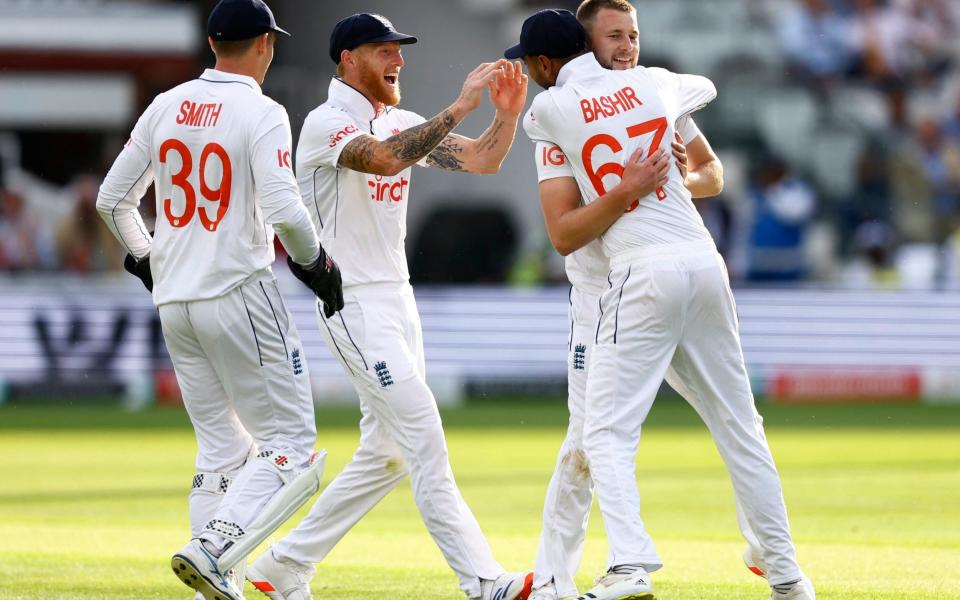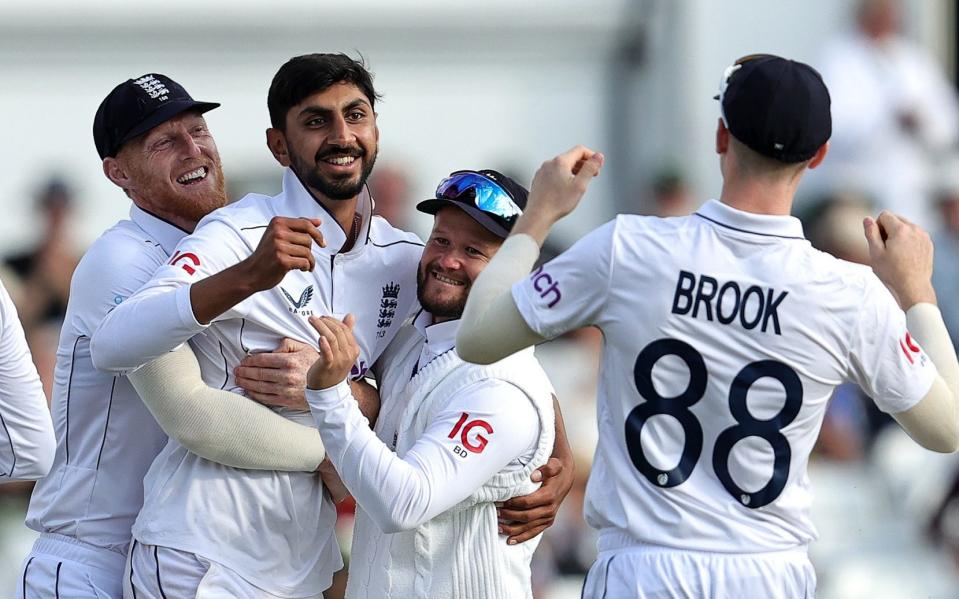
A series whitewash is a rare achievement for England. They have only managed it at home twice in 13 years, but can make it three if they win the third Test against West Indies starting on Friday.
By picking the same XI, England signalled their intention to win rather than experiment with their bowling attack with an eye on the Ashes in 16 months’ time.
Results are important for a team that until the Trent Bridge win last week had gone 19 months without a series victory and copped flak for a 4-1 loss in India after tossing away winning positions in the drawn Ashes.
They also know Bazball is divisive. It is like a political issue, inviting opposing views. To its supporters it has revolutionised England, made them better to watch and produced a team that has won 16 out of 25 matches, only lost one series in six, which was in the toughest place in the world to tour, India, and drew an Ashes from being 2-0 down.
To its detractors it is style over substance, entertainment over winning and left the team moored to the bottom of the World Test championship. It is a debate that will only be settled by the outcome of the next Ashes.
Gulf between England and counties has never been wider
But away from the results, one trend has emerged: the gulf between county and Test team has never been wider. They are totally separate entities, with one not really informing the other.
Take Shoaib Bashir, Gus Atkinson and Jamie Smith, who will play at Edgbaston this week. Bashir averages nearly 70 in the championship and was clattered for 38 in one over this season when playing on loan for Worcestershire because he was kept out of the Somerset side by Jack Leach.
Bashir was picked ahead of Leach by England this summer, took his third five-wicket haul in five Tests at Trent Bridge and averages 29. Atkinson took the new ball for England in Nottingham, stepping into the shoes of James Anderson despite never having done it for Surrey where he often is second change. Smith is keeping wicket for England in an unfussy way, as if he has been doing it for years in the championship instead of playing as a specialist batsman for his county, Surrey, because of Ben Foakes.
Tall left-armer Josh Hull, who is only 19, is likely to be in an England squad before the end of the summer despite very modest county returns with Leicestershire – a first-class average of 79. John Turner of Hampshire took four for 60 for a County XI against West Indies and is another who is on the verge of a squad place, but has not played in the championship since last summer.

This England management follows their instincts on players, mainly using cricketing knowledge and experience rather than relying on analytics. On Bashir they believe county cricket returns are pretty irrelevant because of the nature of pitches. Somerset pick Leach and not Bashir based partly on loyalty to a solid county servant who has never let them down. England can be more ruthless.
They saw something they liked in Bashir, thrust him into the series against India and recognised he could bowl and cope with the scrutiny. They also feel that bowling in a better attack for England, than he would for a county team, makes a big difference. Mark Wood’s pace earned him one first-innings wicket at Trent Bridge, the pressure at both ends telling in the end as Bashir took seven in the match. Look at Nathan Lyon, he is not the same bowler for Lancashire as when he has Mitchell Starc, Josh Hazlewood and Pat Cummins for company.
County experience can be seen as detrimental
Experience, in England’s view, can be detrimental too, especially for spinners who in county cricket are carried around as spare parts for most weeks of the season. Ben Stokes spent lots of time working on Leach’s confidence. Bashir is a blank page.
Smith was picked on potential, backed to be good enough behind the stumps, despite not keeping for Surrey. He has surprised even England by how adeptly he has settled in, and relaxed around the hype of Test cricket. Atkinson bowls with the heat needed at Test level, less so in county cricket where seam and swing rules and workloads are heavy, persuading bowlers not to flog themselves at high pace.
The top seven is baked in now until the end of the Ashes tour in early 2026 but it would take more than just weight of runs in county cricket for that to change. Managing director Rob Key asks the question of whether they can win games for England. Players like Dom Sibley and Rory Burns were picked for England based on sustained success at county level despite obvious quirks in their technique duly exposed by Test attacks. It is hard to see those selections now.
“I’m obviously someone who has to watch county cricket and I sort of personally feel I’ve got quite a good sense of just seeing something that maybe just stands out a little bit,” said Stokes. “That’s quite a hard thing to tell someone else to go and do. We’ve obviously had some selections that have raised a few eyebrows but I think between me, Baz [coach Brendon McCullum], Wrighty [chief selector Luke Wright] and Rob Key we’ve sort of gone with our gut on those because they’ve just had something that has stood out.”
There is also a recognition now with England that it is not their right to dictate to counties, which has eased what has been a strained relationship in the past. Head coaches have trophies to win, their own targets to meet. Members want championship cricket, pay their dues and have a right to a voice. England must work with the system, rather than change it.
It can be a huge waste of energy trying to force counties to do something for the good of the Test team – picking a player like Bashir or giving Atkinson the new ball – when it might be to the detriment of their own championship results.
“A lot of people in this job end up getting down a black hole of county cricket and I am determined not to do that,” Key told Telegraph Sport earlier this year. “It is for counties to decide about county cricket.”
It is Club England now and results over the next 18 months will determine if it stays that way.
Article courtesy of
Source link